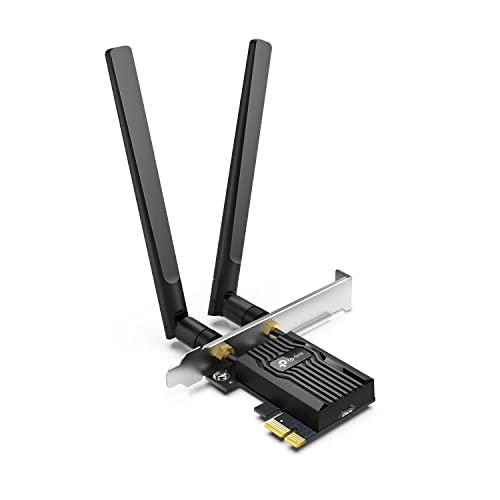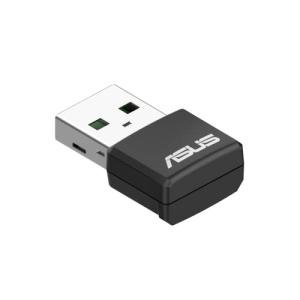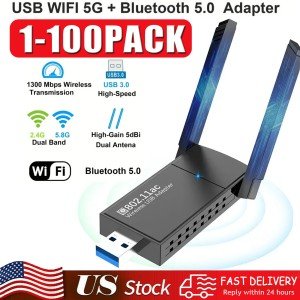**Network Adapters: The Gateway to Connectivity**
Network adapters are integral components in the realm of modern computing, facilitating seamless communication and data exchange between devices and networks. Whether wired or wireless, these devices play a crucial role in enabling connectivity, supporting everything from browsing the internet to hosting cloud-based applications. This essay explores the purpose, functionality, types, and importance of network adapters, emphasizing their indispensable role in modern technology.
---
### **What Are Network Adapters?**
A network adapter, also referred to as a Network Interface Card (NIC), is a hardware component that enables a computer or device to connect to a network. It serves as the intermediary between the device's internal processing system and the external network, translating digital data into signals that can be transmitted over the network medium, such as cables or radio waves.
Modern network adapters can be standalone devices inserted into computer motherboards or integrated directly into systems like laptops, smartphones, and IoT devices. They support various connectivity standards, including Ethernet, Wi-Fi, and cellular networks, ensuring compatibility across a broad spectrum of devices.
---
### **Types of Network Adapters**
Network adapters come in various forms, catering to different requirements and environments:
1. **Ethernet Adapters**
- These are wired network adapters that use Ethernet cables to connect devices to local area networks (LANs). They are renowned for their stability, reliability, and high-speed data transfer capabilities.
- Modern Ethernet adapters support speeds ranging from 1 Gbps to 10 Gbps or more, making them suitable for data-intensive applications.
2. **Wireless Adapters (Wi-Fi Adapters)**
- Wireless network adapters enable devices to connect to Wi-Fi networks using radio waves. They are commonly found in laptops, smartphones, and tablets, offering flexibility and mobility.
- USB Wi-Fi adapters can be used to add wireless capabilities to desktop PCs or older devices that lack built-in Wi-Fi.
3. **Cellular Adapters**
- Cellular network adapters, such as 4G or 5G modules, allow devices to connect to mobile networks. These adapters are essential for mobile devices, IoT applications, and remote setups that require internet access beyond traditional Wi-Fi or Ethernet connections.
4. **Bluetooth Adapters**
- These enable devices to establish short-range wireless connections, commonly used for peripherals like headphones, keyboards, and mice.
5. **Powerline Adapters**
- Powerline adapters use existing electrical wiring to transmit data, providing an alternative solution for extending network connectivity in areas where Ethernet cables or Wi-Fi signals are impractical.
6. **Fiber Optic Adapters**
- These adapters support connections via fiber optic cables, delivering extremely high-speed data transmission for enterprise and data center networks.
---
### **How Network Adapters Work**
The functionality of network adapters revolves around the following processes:
1. **Data Encapsulation**
Network adapters encapsulate data from the host device into packets, which are structured units of data suitable for transmission over a network.
2. **Signal Conversion**
Wired adapters convert digital data into electrical signals for transmission through cables, while wireless adapters convert data into electromagnetic signals for transmission via radio waves.
3. **Protocol Implementation**
Network adapters adhere to networking protocols, such as Ethernet for wired connections or IEEE 802.11 standards for wireless connections, ensuring compatibility and smooth communication between devices.
4. **Error Detection and Correction**
Adapters incorporate error-checking mechanisms to identify and correct data transmission errors, maintaining data integrity.
---
### **Importance of Network Adapters**
1. **Connectivity**
Network adapters are essential for establishing connections between devices and networks, enabling internet access, file sharing, and communication across local and global networks.
2. **Flexibility**
Wireless adapters and cellular modules provide users with the freedom to connect from virtually anywhere, enhancing mobility and productivity.
3. **High-Speed Data Transfer**
Ethernet and fiber optic adapters support high-speed data transmission, catering to the demands of online gaming, streaming, video conferencing, and enterprise operations.
4. **Device Integration**
Adapters bridge the gap between different network types and devices, ensuring compatibility and interoperability in diverse computing environments.
5. **Scalability**
As networking standards evolve, adapters can be upgraded or replaced to accommodate new technologies, such as Wi-Fi 6 or 5G, ensuring future-proof connectivity.
---
### **Challenges and Considerations**
1. **Compatibility**
Not all network adapters are compatible with every device or operating system, requiring users to verify compatibility before installation.
2. **Security Risks**
Poorly secured wireless adapters or outdated drivers can expose devices to cyber threats, emphasizing the need for robust security measures.
3. **Performance Variability**
Wireless adapters are susceptible to interference and signal degradation, which can impact performance, especially in crowded environments.
---
### **The Future of Network Adapters**
As connectivity continues to evolve, network adapters are adapting to meet the demands of emerging technologies. Advancements in Wi-Fi standards, such as Wi-Fi 6E, and the proliferation of 5G networks are driving innovations in adapter design, ensuring higher speeds, lower latency, and greater capacity. Additionally, the integration of artificial intelligence and machine learning into network management is expected to enhance adapter performance, optimizing connections in real-time.
Sustainability is also becoming a key focus, with energy-efficient designs and eco-friendly materials playing a role in the next generation of network adapters.
---
### **Conclusion**
Network adapters are the unsung heroes of modern connectivity, enabling seamless communication and data exchange across devices and networks. Whether in homes, businesses, or public spaces, these adapters form the foundation of our digital infrastructure, supporting everything from casual browsing to mission-critical operations. As technology advances, network adapters will continue to evolve, ensuring that connectivity remains fast, reliable, and secure in an increasingly interconnected world. Their adaptability and innovation make them indispensable components of modern computing.
View our related products
See more
TP-Link Archer TX55E WiFi Card
Tp-Link
Product Review Score
4.73 out of 5 stars
64 reviews$39.99 $28.99



*Network Adapters: The Gateway to Connectivity*
Network adapters are the unsung heroes of modern connectivity
View our related products
See more
TP-Link Archer TX55E WiFi Card
Tp-Link
Product Review Score
4.73 out of 5 stars
64 reviews$39.99 $28.99



Related Articles
Essential High-Performance PC Components You Need Now
Upgrade your setup with the must-have parts for unbeatable gaming and productivity
Top Picks for Best High-Performance PCs
Find the perfect power machine for gaming, work, or creative projects
Your Guide to the Best High-Performance PCs
Find the Right PC for Your Gaming and Creative Needs


